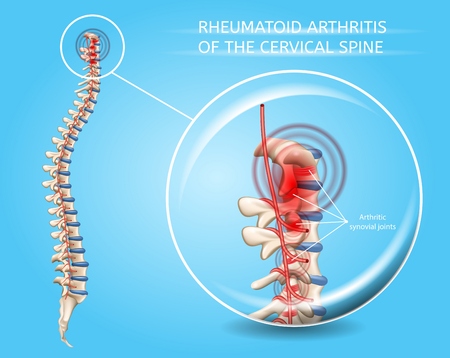1. Patient Rights and Informed Consent
In the United States, patients who are starting rehabilitation after a heart attack have important legal rights that protect their interests and well-being. One of the key requirements in cardiac rehabilitation is informed consent. This means that before any treatment or therapy begins, patients must be given clear information about what the rehab program involves, the risks and benefits, and any alternative options they may have.
Understanding Informed Consent
Informed consent isn’t just a form to sign—it’s a process that ensures patients fully understand their choices. Healthcare professionals need to explain:
- The goals of the rehabilitation program
- Possible side effects or risks
- Expected outcomes
- Other available treatments or therapies
This conversation helps patients make decisions together with their medical team, rather than having decisions made for them.
Key Patient Rights in Cardiac Rehabilitation
| Patient Right | Description |
|---|---|
| Participation in Decisions | Patients can ask questions and choose whether to accept or refuse specific treatments. |
| Privacy Protection (HIPAA) | Patient health information must be kept private according to federal law. Only authorized personnel can access it. |
| Access to Information | Patients have the right to view their medical records and understand their care plan at any time. |
| Cultural Respect | Treatment should consider the patient’s language, beliefs, and preferences. |
The Role of Healthcare Providers
Doctors, nurses, and therapists are legally required to respect these rights at every step of the rehab process. They must use plain language, provide interpreters if needed, and answer all patient questions honestly. This approach builds trust and ensures that care is truly patient-centered.
Why It Matters
Legal protections like informed consent give patients control over their recovery journey. By understanding their rights, patients can take an active role in shaping their health outcomes while staying protected under U.S. healthcare regulations.
2. Confidentiality and HIPAA Compliance
Protecting Patient Information in Rehabilitation
After a heart attack, patients often need ongoing rehabilitation to regain their strength and confidence. During this process, healthcare providers collect and use sensitive health information. In the United States, protecting this information isn’t just an ethical responsibility—it’s also required by law through the Health Insurance Portability and Accountability Act (HIPAA).
What Is HIPAA?
HIPAA is a federal law designed to keep patient health information private and secure. It sets strict rules for how doctors, nurses, therapists, and even insurance companies handle your medical details. The main goal is to make sure that only authorized people can see or share your health information.
Key HIPAA Requirements in Post-Heart Attack Rehab
| Requirement | What It Means for Patients |
|---|---|
| Privacy Rule | Your rehab team must protect your personal health details and discuss them only with those directly involved in your care. |
| Security Rule | Your electronic health records are protected through passwords, encryption, and other safeguards. |
| Patient Rights | You can ask to see your medical records and request corrections if needed. |
| Minimum Necessary Rule | Only essential information is shared among staff—never more than what’s needed for your treatment. |
Why Confidentiality Matters in Rehab Settings
Rehabilitation programs often involve different healthcare professionals working together. Sharing information helps coordinate your care, but everyone on your team must follow HIPAA rules. This protects you from unwanted sharing of personal details, discrimination, or breaches of trust. Keeping your information safe encourages open communication with your rehab team so you can focus on recovery without worry.

3. Access to Rehabilitation Services and Healthcare Equity
In the United States, access to post-heart attack rehabilitation is not always equal for everyone. Many legal and ethical issues arise when patients try to get the care they need. These challenges often depend on factors like insurance coverage, language barriers, socioeconomic status, and discrimination. Understanding these barriers is important for anyone working in or navigating the American healthcare system.
Insurance Coverage
One of the biggest obstacles to rehabilitation services in America is health insurance. People with private insurance or good employer-based plans usually have more access to rehab programs. However, those with limited coverage, high deductibles, or no insurance may struggle to afford these services. Medicaid and Medicare help some people, but coverage can vary by state and plan.
| Type of Insurance | Typical Rehab Coverage | Common Barriers |
|---|---|---|
| Private Insurance | Often covers cardiac rehab but may limit number of sessions | High copays, pre-authorization needed |
| Medicare | Covers most medically necessary rehab after heart attack | Coverage limits, paperwork complexity |
| Medicaid | Coverage varies by state, sometimes limited access | Provider shortages, strict eligibility rules |
| No Insurance | No automatic coverage for rehab services | High out-of-pocket costs, financial hardship |
Language Barriers and Cultural Differences
For many Americans whose first language is not English, understanding medical instructions and communicating with healthcare providers can be difficult. This can make it hard for patients to participate fully in rehabilitation programs or understand the importance of continuing care. Ethically, healthcare providers should offer interpreters and culturally sensitive care to ensure all patients receive equal treatment.
Socioeconomic Status
Poverty can affect every step of the rehabilitation process. Patients with lower income may have trouble paying for transportation to rehab centers, taking time off work, or affording healthy food and medications. These practical issues create unequal opportunities for recovery after a heart attack.
Main Socioeconomic Barriers to Rehab Access:
- Lack of reliable transportation to appointments
- No paid leave from work for medical care
- Limited access to affordable healthy food options
- Lack of childcare support during rehab sessions
Discrimination in Healthcare Settings
Inequities also exist due to racial, ethnic, gender, or disability discrimination within the healthcare system. Some patients may receive less information about rehab options or experience bias that impacts their care. Legally and ethically, providers are required to treat all patients fairly and without prejudice.
4. Professional Boundaries and Scope of Practice
Understanding Professional Boundaries in Cardiac Rehabilitation
After a heart attack, patients need support from a team of rehabilitation professionals. In America, rehab specialists—like physical therapists, occupational therapists, nurses, and doctors—must follow strict ethical guidelines to protect patients and ensure high-quality care. One of the most important responsibilities is maintaining clear professional boundaries with patients and colleagues.
Why Are Professional Boundaries Important?
Professional boundaries help create a safe environment where patients can trust their healthcare providers. Boundaries prevent misunderstandings, avoid conflicts of interest, and keep the relationship focused on the patient’s recovery.
| Dos | Donts |
|---|---|
| Keep conversations focused on care and recovery goals | Share personal information or develop friendships with patients |
| Respect patient privacy and confidentiality at all times | Discuss patient information in public places or with unauthorized people |
| Follow professional dress codes and behavior standards | Accept gifts or favors from patients or their families |
Practicing Within Your Scope
Every rehab professional has a specific scope of practice defined by state laws, licenses, and education. Practicing within this scope means only performing tasks that you are trained and legally allowed to do. For example, a physical therapist should not prescribe medication, and a nurse should not design an exercise program unless they have special training.
Examples of Scope of Practice in Cardiac Rehab Teams
| Role | Main Responsibilities | Outside Their Scope |
|---|---|---|
| Physical Therapist (PT) | Create exercise plans, monitor progress, educate on safe activity levels | Prescribe medication or diagnose conditions outside movement issues |
| Nurse | Monitor vital signs, provide medication as prescribed, patient education on lifestyle changes | Create rehabilitation exercise programs without PT consultation |
| Occupational Therapist (OT) | Help patients regain daily living skills like dressing or cooking after a heart attack | Treat cardiac symptoms directly without medical supervision |
| Cardiologist/Physician | Diagnose conditions, prescribe treatment plans, manage medications | Provide hands-on rehab exercises typically done by therapists |
The Importance of Inter-Professional Collaboration
No single healthcare provider can meet all the needs of a post-heart attack patient. Ethical rehab professionals work closely with others on the care team to deliver well-rounded support. This means sharing information appropriately, respecting each other’s roles, and asking for help when something falls outside your expertise. By collaborating effectively, patients receive safer and more effective rehabilitation care.
5. Cultural Competence and Respect for Diversity
In post-heart attack rehabilitation, cultural competence is essential to providing ethical and effective care in America’s diverse society. Healthcare professionals must be aware of and sensitive to the unique cultural, religious, and personal values that each patient brings to their recovery journey. This means understanding how different backgrounds can affect health beliefs, communication styles, dietary practices, family involvement, and attitudes toward medical interventions.
Why Cultural Sensitivity Matters
When patients feel respected and understood, they are more likely to trust their care team and actively participate in their rehabilitation plan. Ignoring cultural differences may lead to misunderstandings, decreased patient satisfaction, or even non-compliance with treatment recommendations. By fostering an inclusive environment, providers can help ensure that all patients receive equitable support as they recover from a heart attack.
Examples of Cultural Considerations in Rehabilitation
| Cultural Factor | Potential Impact on Rehab | Inclusive Approach |
|---|---|---|
| Dietary Restrictions | Certain foods in rehab meal plans may not align with religious or cultural diets. | Offer menu options that respect dietary laws (e.g., halal, kosher, vegetarian). |
| Language Barriers | Limited English proficiency can hinder understanding of rehab instructions. | Provide translated materials and qualified interpreters. |
| Family Roles | Some cultures involve extended family in medical decisions. | Encourage family participation when making care plans. |
| Health Beliefs | Differing views on illness causes or healing methods may affect compliance. | Respect beliefs while clearly explaining evidence-based treatments. |
The Legal and Ethical Framework
U.S. laws such as the Civil Rights Act and Americans with Disabilities Act require healthcare providers to deliver non-discriminatory care. Ethically, providers should strive for fairness by recognizing and addressing health disparities linked to culture or background. This includes ongoing education on cultural awareness and implicit bias for all staff involved in cardiac rehabilitation.
Supporting Diversity in Practice
Building a culturally competent rehab program isn’t just about checking boxes—it’s about genuinely listening to each patient’s story and adapting care accordingly. Simple actions like asking about preferred pronouns, offering spiritual support if requested, or celebrating culturally significant events within the facility can make a significant difference in a patient’s recovery experience.


